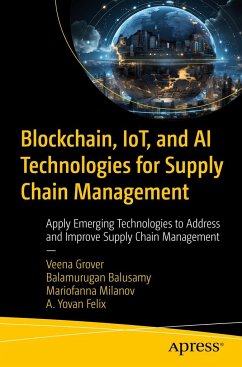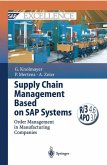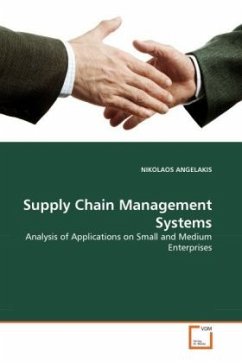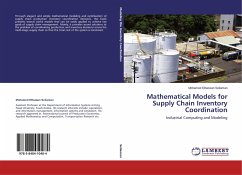Examine the synergistic possibilities of combining blockchain, IoT, and AI technologies in supply chain management. This book will address the difficulties and possibilities of integrating these technologies and offer helpful implementation advice.
The current state of supply chain management involves several challenges, including lack of transparency, limited visibility into product movements, inefficient inventory management, and difficulty in tracking and tracing products. Blockchain, IoT, and AI can potentially address some of these challenges and improve supply chain management.
To help illustrate this, case studies and actual instances of businesses implementing or experimenting with blockchain, IoT, and AI technology in their supply chains are included in the book. You'll review helpful advice on implementation and highlight successful deployments, lessons learned, and the impact of these technologies on supply chain visibility, agility, sustainability, and customer experience. This book further elaborates the fundamental concepts of AI and ML algorithms and demonstrates how AI can process enormous volumes of supply chain data to produce actionable insights, improve inventory control, forecast demand, and increase forecasting precision.
This collective work will serve as a comprehensive guide for supply chain professionals, researchers, and technology enthusiasts interested in understanding the potential of blockchain, IoT, and AI technologies in revolutionizing supply chain management practices.
What You Will Learn
Discuss the evolving landscape of technology, potential advancements, and how Blockchain, IoT, and AI can shape the future of supply chainsGain Insight into upcoming developments and prepare for changing dynamics of the industryUnderstand intricate details of blockchain, IoT, and AI Technologies in real-life scenarios
Who Is This Book For
Industry Professionals working in the domain of supply chain management who would be interested in understanding how these technologies can enhance efficiency, transparency, and optimization in their supply chains.
The current state of supply chain management involves several challenges, including lack of transparency, limited visibility into product movements, inefficient inventory management, and difficulty in tracking and tracing products. Blockchain, IoT, and AI can potentially address some of these challenges and improve supply chain management.
To help illustrate this, case studies and actual instances of businesses implementing or experimenting with blockchain, IoT, and AI technology in their supply chains are included in the book. You'll review helpful advice on implementation and highlight successful deployments, lessons learned, and the impact of these technologies on supply chain visibility, agility, sustainability, and customer experience. This book further elaborates the fundamental concepts of AI and ML algorithms and demonstrates how AI can process enormous volumes of supply chain data to produce actionable insights, improve inventory control, forecast demand, and increase forecasting precision.
This collective work will serve as a comprehensive guide for supply chain professionals, researchers, and technology enthusiasts interested in understanding the potential of blockchain, IoT, and AI technologies in revolutionizing supply chain management practices.
What You Will Learn
Discuss the evolving landscape of technology, potential advancements, and how Blockchain, IoT, and AI can shape the future of supply chainsGain Insight into upcoming developments and prepare for changing dynamics of the industryUnderstand intricate details of blockchain, IoT, and AI Technologies in real-life scenarios
Who Is This Book For
Industry Professionals working in the domain of supply chain management who would be interested in understanding how these technologies can enhance efficiency, transparency, and optimization in their supply chains.








